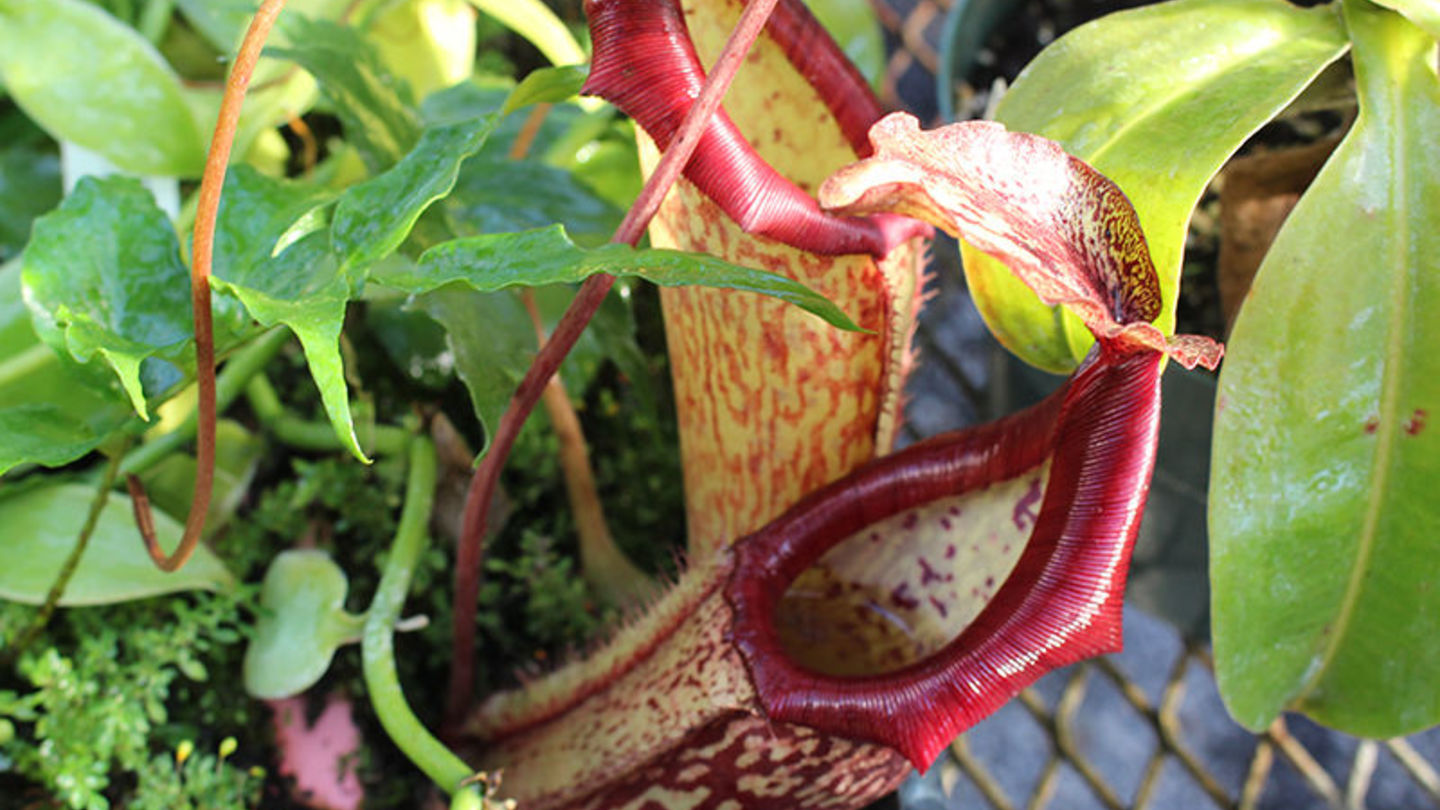
After 30 years with the Environmental Protection Agency, Jeffrey Lapp has developed a true passion and respect for plants.
"In my early years working for the agency, I spent most of my time in the field, which took me to a wide variety of environments and ecosystems," said Lapp, Wetlands Branch Chief for the EPA Region III office. "I became particularly interested in northeastern bogs and the plants that grew there."
Lapp's interest in wetland plants steers decidedly off the beaten path toward plants that have a very specific way to get the nutrients they need to survive — they "eat" meat. His dedication to the leafy little carnivores is readily evident thanks to the more than 1,000 pitcher plants he has growing at home outdoors and in his home shade house and greenhouse.
"Pitcher plants are my passion, I grow them from seed in our greenhouse, then they move to the shade house and finally we plant them outside in troughs of peat moss and sand. This will be my 29th year displaying them at the Philadelphia Flower Show," he said. "They are hardy plants that are native to the eastern United States. The range in which they can grow stretches from the Florida panhandle all the way up into Canada; there is a diverse range of growing zones in which they can succeed."
On Wednesday, February 19, Lapp will be bring his extensive knowledge of carnivorous plants to Temple University Ambler for the next Ambler Arboretum Speaker Series event, The Care and Feeding of Carnivores. The program will begin at 7 p.m. and will be held in the Campus Lounge, Bright Hall. The program is free for students, faculty, staff and Ambler Arboretum members (learn how to become a member) and $10 for non-members. Register online.
"I'll be talking mostly about pitcher plants. There are probably about seven or eight major species in addition to a couple of hybrids. I've been able to grow all but one — I've so far found that it's not hardy enough for Pennsylvania weather," he said. "I'll be talking about where the plants occur in nature; how to care for them from bog gardens to container gardens; the process of propagation; and companion plants. Pitcher plants have a pretty unique growing environment but there are other plants, including orchids and cranberries, that grow very well with them — plants that grow in very saturated soil."
Insects that fall victim to a pitcher plant are essentially succumbing to a slip-and-fall accident. The insect lands on the slippery nectar on the underside of the pitcher plants lids; one slip later and it's down the hatch. "Hair structures" within the plant then prevent the insect from ever climbing back out again.
"I think people are fascinated by these plants because they are so different — you don't often associate meat-eating with plants. This is an adaptation that developed over millennia as an alternative nutrient source," Lapp said. "It allows them to thrive in what would typically be considered nutrient poor environments."
Pitcher plants, Lapp said, are much hardier than most people give them credit for.
"Often when you see pitcher plants, people have placed them in terrariums, but that's not necessary. With the right conditions and the right soil mix, they'll grow just fine," he said. "They show off some amazing colors and typically deer won't touch them. What I hope is that people walk away with an appreciation for the value of these native, unique plants. They fit into any home landscape and can be used just like any other ornamental plant — they just happen to have some interesting quirks to them."
The Care and Feeding of Carnivores is part of the Longwood Gardens Community Read. In 2020, Longwood Gardens is asking readers to "push the boundaries of what they thought they knew and dive into the wacky, weird, and wild world of plants."
Join the Ambler Arboretum for walks, talks and workshops highlighting sustainability, women's influence in horticulture and the healing power of plants during this monthly speaker series. Program registration begins at 6:30 p.m., the presentation begins at 7 p.m. and Q&A follows at 8 p.m.
Information: kathleen.salisbury@temple.edu or 267-468-8400.
